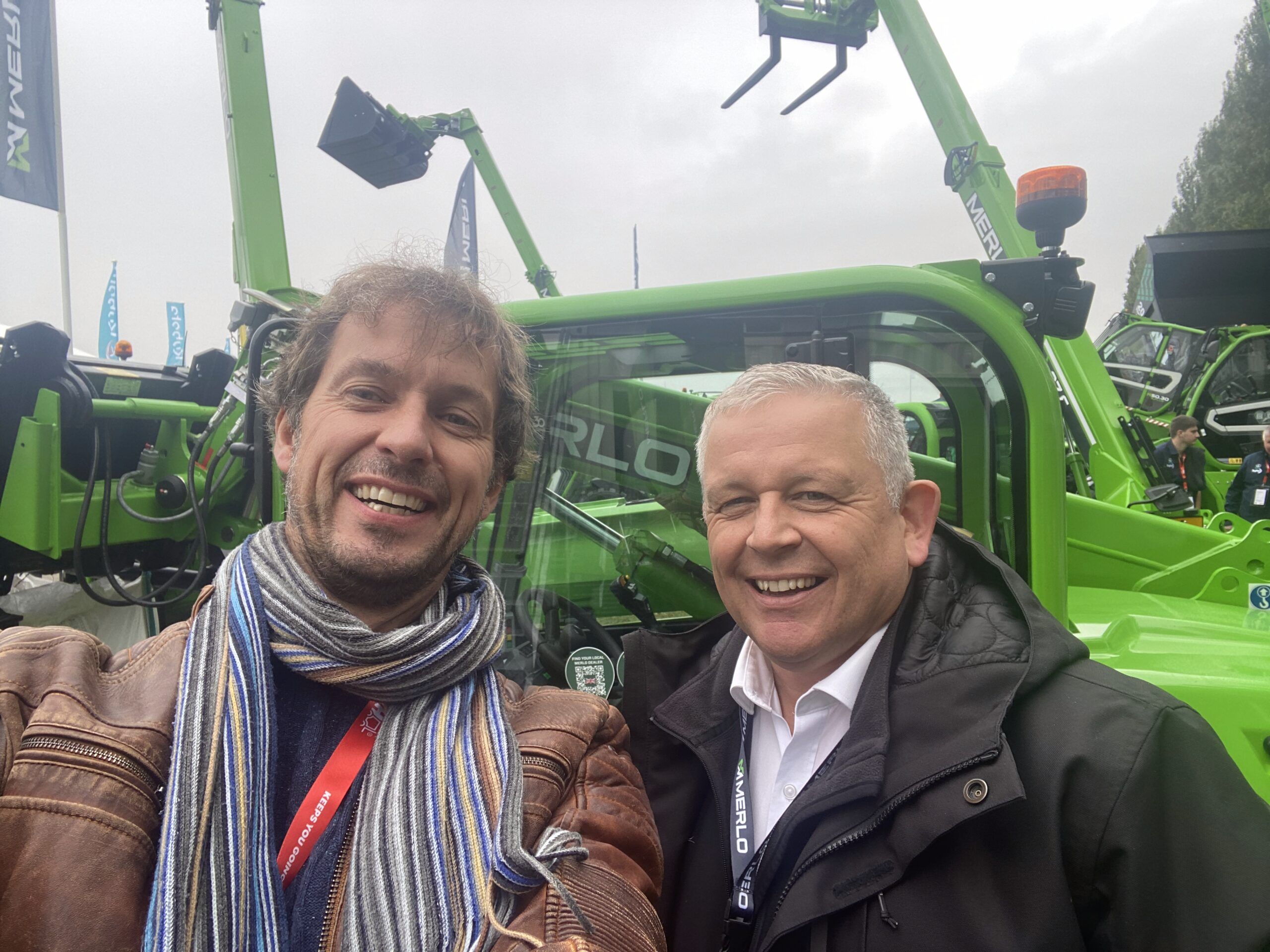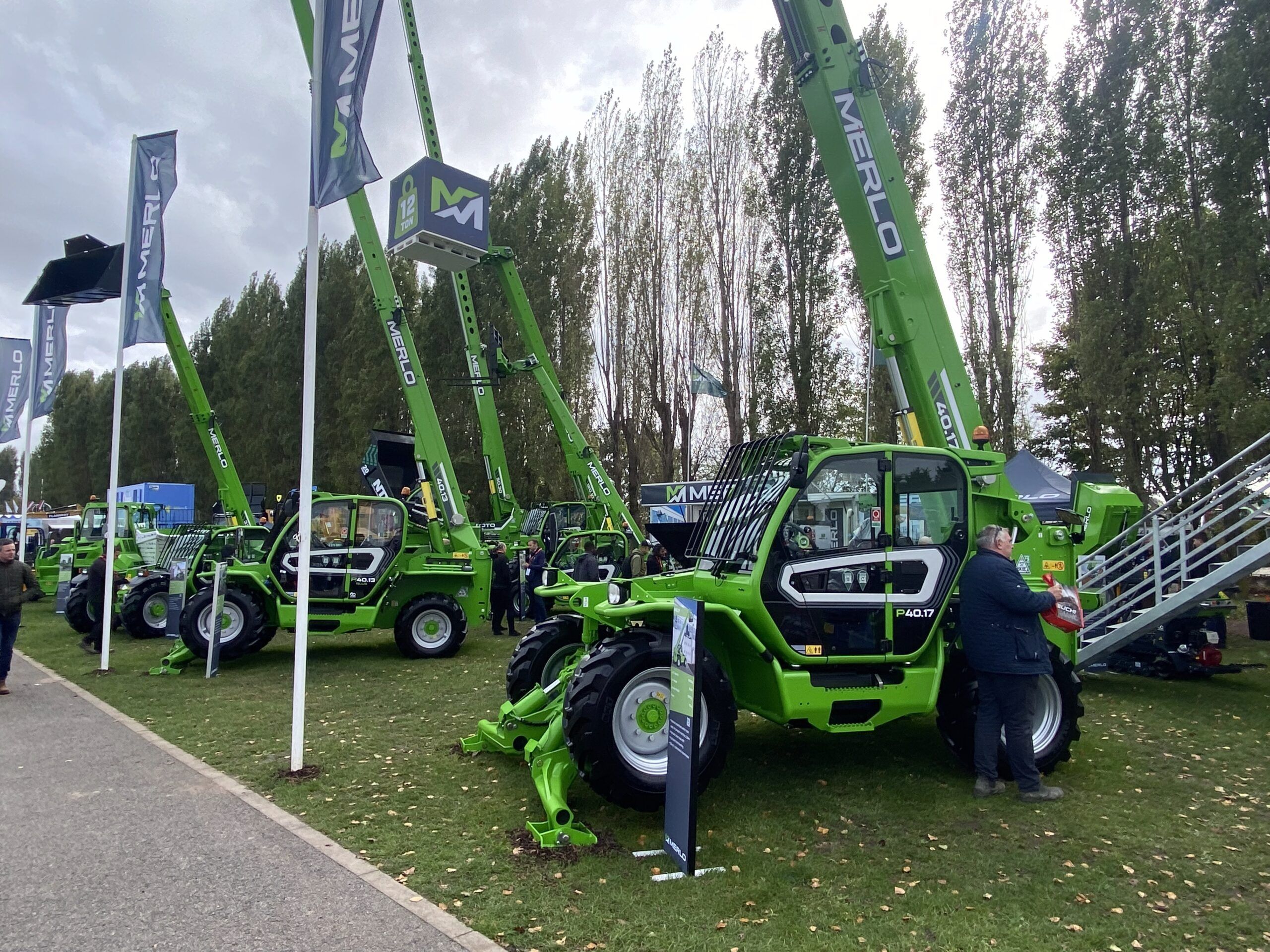Shaun Groom traces his profession journey from driving and repairing area bikes on Northfolk farmyards to main the UK operation of the family-owned Italian OEM, Merlo
From profitable BMW Apprentice of the Yr in 1993, to transport refurbished telehandlers to New Zealand’s movie trade within the 2000s, Shaun Groom’s profession has been outlined by a permanent fascination with engines – and now, more and more, with what would possibly exchange them.
We meet Groom on the Merlo stand on the PlantWorx building expo in Newark, UK, grabbing a cup of espresso in amongst the OEM’s distinct green-liveried autos, with music from the stand’s demo space offering an upbeat soundtrack to our chat.

“My household background was in plant rent and agriculture,” Groom tells us. “I grew up in rural Norfolk, and something with an engine fascinated me as a toddler. So I had area bikes and I had vehicles earlier than I may drive formally, and I’d all the time labored on them.”
That early ardour led him to a BMW dealership for his apprenticeship, the place he grew to become one of many producer’s high apprentices and earned a visit to Germany. “BMW had been one of many pioneers of CANbus expertise,” says Groom. “So, we had been utilizing multiplex-type wiring again within the late 80s, early 90s.” He even drove a hydrogen-powered BMW 7 Sequence in 1993. “I bear in mind the boot was utterly stuffed with the tank!”
However in 1995, Groom left the automotive world for agricultural equipment. After working for varied sellers within the UK, he spent three years in New Zealand within the early 2000s, the place he first encountered Merlo telehandlers by way of an Irish acquaintance on the OEM.
When Groom returned from New Zealand, his deliberate employment fell by way of, resulting in an entrepreneurial enterprise exporting used Merlo telehandlers to New Zealand principally to be used in lighting rigs for the movie trade, which was booming off the again of The Lord of the Rings blockbusters.
“Merlo on the time couldn’t produce sufficient new machines,” says Groom. “I used to be sourcing very tidy used machines in Germany, refurbishing them to a excessive customary, and transport them to New Zealand.”
Nevertheless, unpredictable revenues from his enterprise led Groom to hunt everlasting employment. Because of this, he spent the subsequent 15 years with an Austrian agricultural implement producer Pottinger, rising from product specialist to managing director within the UK.
Extra lately, Merlo got here calling. “I had recognized the enterprise for a very long time and had numerous respect for the product and the household,” says Groom. “I used to be happy in my job, however I noticed numerous alternatives at Merlo, and potential challenges, which I thrive on.”
Constructing from inside
After almost 5 years into his tenure as normal supervisor at Merlo UK, Groom has a deep understanding of the strengths of the machines and emphasises the Italian producer’s distinctive method to manufacturing. “Sometimes, we’re making round 92% of the parts ourselves in home,” he says. “And that’s necessary for the enterprise. It was confirmed to be a very good technique in the previous few years with supply-chain challenges – it put us in a robust place.”
“I grew up in rural Norfolk, and something with an engine fascinated me”
The corporate serves each agricultural and building sectors, with refined however necessary variations between machines for every market. “In agriculture, the machines are typically used extra intensively,” says Groom. “On a livestock operation, a machine is being utilized in extra of 1,000 hours a 12 months. In a typical building utility it’s 500 hours a 12 months.”
Agricultural machines additionally face harsher circumstances. “Whether or not it’s slurry, fertilizer, water or mud, the machines are inclined to work in excessive circumstances,” he says. “Whereas in building, you’re usually engaged on concrete yards.”
Due to this fact, Merlo’s agricultural telehandlers have extra highly effective engines to ship the mandatory additional capability required. Nevertheless, building fashions have higher attain – as much as 35m in rotating variations, whereas agricultural machines sometimes max out round 11m, as the best work they’re often do is stacking straw bales.
The electrical query
Standing beside Merlo’s eWorker at PlantWorx, Groom discusses the corporate’s transfer into electrification with the pragmatism of somebody who’s spent a long time round engines. The eWorker, which is available in twoor four-wheel drive variations, has confirmed notably profitable in agriculture. Groom believes a giant purpose for that is strain from outlets and shoppers. “There’s numerous transparency within the meals provide chain,” says Groom. “Supermarkets are actually seeking to farmers to display their inexperienced credentials.”
“The most important challenges I see are within the manufacturing, availability, distribution and storage of different fuels”
The four-wheel drive eWorker is powered utilizing both lead-acid or lithium batteries produced be fellow Italian agency FAAM. It makes use of 4 electrical motors – one on every entrance wheel hub and one on the axle on the rear – plus a fifth motor driving all of the hydraulics. This 12 months, the machine earned a gold medal from the Royal Highland Agricultural Society of Scotland, a key a part of which was primarily based on suggestions from operators within the area.
“We’ve bought them not solely in farms in Scotland but additionally in a whisky distillery,” says Groom. “The enchantment for them isn’t any fumes or combustion, as a result of certainly one of their huge considerations is fireplace threat.”
Apparently, over 90% of eWorker gross sales are lead-acid batteries fairly than lithium. “Loads of that comes right down to end-of-life,” he says. “With lead acid, it’s a completely recyclable product. With lithium you’ll be able to eliminate it, however technically there’s nonetheless no restoration course of.”
There’s additionally current data to leverage. “The lifttruck trade has used lead-acid for years,” says Groom. “We’re promoting these into locations the place they’ve had lift-trucks. In order that they’re acquainted with lead acid. They’ve bought the charging tools.”
Rental resistance
Whereas agriculture has embraced electrical telehandlers, the development rental sector has been slower. “Renters are usually not ready to pay a premium for electrical,” says Groom. “They anticipate to hire an electrical machine for a similar worth as a diesel, or presumably much less, as a result of they consider they’re taking a threat.”
This frustrates him, given the expertise’s maturity. “My views are a bit completely different – it’s truly extra of a recognized amount,” he says. “Electrical propulsion has been round for years. Milk was delivered to just about each dwelling within the UK by electrical propulsion 50 years in the past.”
He additionally attracts on his father’s profession in heavy plant upkeep for perspective. He labored on huge electrical draglines and face shovels in opencast mines. “These large machines transfer hundreds of tons of soil a day utilizing electrical energy,” says Groom. “It was probably the most environment friendly option to do it. The quantity of diesel required to propel these machines could be phenomenal and troublesome to get to that space.”

The infrastructure hole
Wanting forward, Groom sees the way forward for zero-emission equipment as nonetheless unclear: “The consensus is combined, whether or not it’s electrical, methane or hydrogen. These artificial fuels are clearly in improvement.”
Merlo works with 4 engine OEM companions – Perkins, FPT, Deutz, and Rehlko (previously Kohler) – all growing various fuels. “It’s bought to be commercially viable, it’s bought to be sensible,” says Groom. “The most important challenges I see are within the manufacturing, availability, distribution and storage of different fuels. With an electrical machine we all know the place we are able to cost it,” he says. “That may’t at present be stated for various fuels.”
For transition to succeed, he believes, governments should act. “There needs to be motivation and drive from governments to make it occur,” he says, “They’ve bought to spend money on infrastructure to assist the transition. We’ve had decade upon decade of inside combustion engines – if we’re going to see any form of transition, there additionally must be monetary incentives within the type of tax aid or direct subsidies.”
Standing beside machines representing each Merlo’s electrical and diesel ranges, Groom embodies the trade’s bridging era – engineers snug with each combustion and electrons, formed by hands-on mechanical roots however navigating in the direction of a zero-emission future. “It’s all the time been ‘something with an engine’ for me,” he says. “However, actually, not all of them have engines anymore.”
This text first appeared within the October concern of iVT


